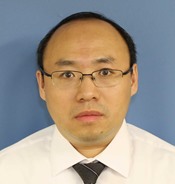Leapfrog CT DLP Data Collection Without Using Dose Monitoring Software for a Pediatric Hospital
Presentations
PO-GePV-I-49 (Sunday, 7/10/2022) [Eastern Time (GMT-4)]
ePoster Forums
Purpose: Leapfrog Hospital Survey needs the hospital’s 25th, 50th, and 75th percentiles for CT radiation dose length product (DLP) in routine head and abdomen/pelvis scans for pediatric patients at each age group. This study shows how the DLP data are collected and analyzed manually without dose monitoring software.
Methods: Without dose monitoring software, the DLP data have to be acquired from PACS (Picture Archiving and Communication System) one by one manually for each age group (<1 year, 1-4, 5-9, 10-14, and 15-17 years old) and for each anatomic area (head or abdomen/pelvis). First, a list of head and abdomen/pelvis exams was generated by PACS support. This list includes exam dates (sorted from January to December), accession number, anatomic area, and the age of patients. Age groups were then added to the excel sheet, with each age group occupying one column. If the age is within an age group, “1” is assigned; otherwise, “0” is given. The table is copied to different age group sheets and sorted by that age group. For example, after sorting, all the patients at age 1-4 are on top of the table of the 1-4 age group sheet. Using the exam dates and accession numbers (as RIS exam ID on PACS), CT dose pages were accessed manually on PACS, and DLP values were recorded on the excel sheet. DLP values of 30 encounters per anatomic area and age group were collected and then entered into the Leapfrog worksheet to get the DLP values at 25th, 50th, and 75th percentiles.
Results: DLP values of 30 encounters per anatomic area and age group were collected manually, and different percentiles were estimated.
Conclusion: DLP data were acquired and analyzed manually for different anatomic areas and age groups for the Leapfrog hospital survey without using dose monitoring software.
Keywords
Not Applicable / None Entered.
Taxonomy
Not Applicable / None Entered.
Contact Email



